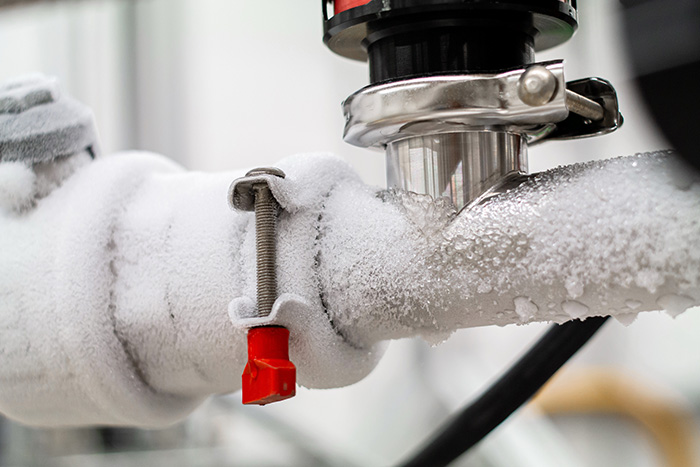What're your thoughts with regards to Preventing and dealing with frozen pipes?

Cold weather can damage your pipes, specifically by freezing pipelines. Below's how to prevent it from occurring and what to do if it does.
Introduction
As temperatures decrease, the danger of icy pipes boosts, potentially resulting in expensive repair work and water damage. Understanding how to prevent icy pipelines is vital for house owners in chilly climates.
Avoidance Tips
Shielding prone pipes
Cover pipelines in insulation sleeves or make use of warmth tape to shield them from freezing temperatures. Focus on pipes in unheated or outside areas of the home.
Home heating techniques
Maintain indoor rooms appropriately warmed, specifically locations with plumbing. Open cabinet doors to allow cozy air to distribute around pipes under sinks.
How to identify icy pipes
Search for decreased water flow from taps, uncommon smells or sounds from pipes, and visible frost on subjected pipes.
Long-Term Solutions
Structural adjustments
Take into consideration rerouting pipelines away from outside walls or unheated areas. Include additional insulation to attics, basements, and crawl spaces.
Updating insulation
Purchase premium insulation for pipes, attic rooms, and walls. Proper insulation aids preserve consistent temperature levels and decreases the threat of frozen pipelines.
Securing Outdoor Pipes
Garden pipes and outdoor taps
Detach and drain pipes garden pipes before wintertime. Mount frost-proof spigots or cover outside taps with insulated caps.
Comprehending Icy Pipes
What triggers pipelines to ice up?
Pipelines freeze when exposed to temperature levels listed below 32 ° F (0 ° C) for expanded periods. As water inside the pipes freezes, it expands, taxing the pipeline wall surfaces and possibly triggering them to rupture.
Dangers and damages
Frozen pipelines can bring about water disturbances, property damages, and costly repair work. Burst pipelines can flood homes and cause considerable architectural damage.
Indicators of Frozen Water Lines
Identifying icy pipes early can stop them from rupturing.
What to Do If Your Pipes Freeze
Immediate activities to take
If you suspect icy pipes, maintain faucets open to soothe pressure as the ice thaws. Use a hairdryer or towels taken in hot water to thaw pipelines slowly.
Conclusion
Stopping icy pipelines needs proactive procedures and fast actions. By recognizing the causes, indicators, and safety nets, property owners can protect their plumbing throughout cold weather.
6 Proven Ways to Prevent Frozen Pipes and Protect Your Home
Disconnect and Drain Garden Hoses
Before winter arrives, start by disconnecting your garden hoses and draining any remaining water. Close the shut-off valves that supply outdoor hose bibs and leave the outdoor faucet open to allow any residual water to drain. For extra protection, consider using faucet covers throughout the colder months. It’s also important to drain water from any sprinkler supply lines following the manufacturer’s directions.
Insulate Exposed Pipes
Insulating your pipes is an effective way to prevent freezing. Pipe insulation is readily available at home improvement stores and is relatively inexpensive. Pay close attention to pipes in unheated areas such as the attic, basement, crawl spaces, or garage. Apply foam insulation generously to create a buffer against the cold. You can also wrap your pipes in heat tape or thermostat-controlled heat cables for added warmth.
Seal Air Leaks
Inspect your home for any cracks or openings that could let in cold air. Seal any holes around the piping in interior or exterior walls, as well as the sill plates where your home rests on its foundation. Additionally, make sure to keep your garage door closed unless you’re entering or exiting. Leaving it open creates a significant air leak that can lead to frozen pipes.
Allow Warm Air Circulation
During cold snaps, it’s essential to allow warm air to circulate evenly throughout your home. Leave interior doors ajar to promote better airflow. Open kitchen and bathroom cabinets to help distribute heat consistently around the rooms. If you have small children or pets, be sure to remove any household chemicals or potentially harmful cleaners from open cabinets for safety.
Let Faucets Drip
A small trickle of water can make a big difference in preventing ice formation inside your pipes. When temperatures drop significantly, start a drip of water from all faucets served by exposed pipes. This continuous flow helps prevent the water from freezing. Additionally, running a few faucets slightly can relieve pressure inside the pipes, reducing the chances of a rupture if the water inside does freeze.
https://choateshvac.com/6-proven-ways-to-prevent-frozen-pipes-and-protect-your-home/

I discovered that blog entry on How to prepare your home plumbing for winter weather while doing a lookup on the web. Sharing is good. Helping people is fun. Thanks so much for your time spent reading it.
Set An Appointment